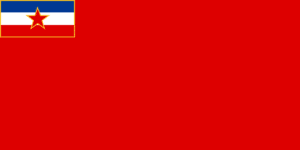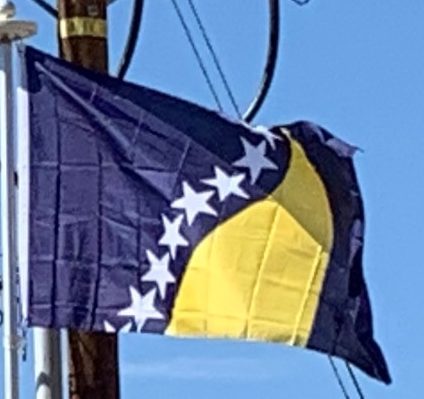A percentage of Muslims served in Nazi Waffen-SS units. Between 64,000 and 79,000 Bosnian Croats were killed between April 1941 to May 1945. Of these, about 18,000 were killed by the Chetniks.
On 12 October 1941, a group of 108 prominent Sarajevan Muslims signed the Resolution of Sarajevo Muslims by which they condemned the persecution of Serbs organized by the Ustaše, made distinction between Muslims who participated in such persecutions and the Muslim population as a whole, presented information about the persecutions of Muslims by Serbs, and requested security for all citizens of the country, regardless of their identity.
Starting in 1941, Yugoslav communists under the leadership of Josip Broz Tito organized their own multi-ethnic resistance group, the partisans, who fought against both Axis and Chetnik forces. On 29 November 1943 the Anti-Fascist Council of National Liberation of Yugoslavia with Tito at its helm held a founding conference in Jajce where Bosnia and Herzegovina was reestablished as a republic within the Yugoslavian federation in its Habsburg borders.
Military success eventually prompted the Allies to support the Partisans, resulting in the successful Maclean Mission, but Tito declined their offer to help and relied on his own forces instead. All the major military offensives by the antifascist movement of Yugoslavia against Nazis and their local supporters were conducted in Bosnia–Herzegovina and its peoples bore the brunt of fighting. More than 300,000 people died in Bosnia and Herzegovina in World War II. At the end of the war the establishment of the Socialist Federal Republic of Yugoslavia, with the constitution of 1946, officially made Bosnia and Herzegovina one of six constituent republics in the new state.
Socialist Federative Republic of Yugoslavia (1945–1992):
Due to its central geographic position within the Yugoslavian federation, post-war Bosnia was selected as a base for the development of the military defense industry. This contributed to a large concentration of arms and military personnel in Bosnia; a significant factor in the war that followed the break-up of Yugoslavia in the 1990s. However, Bosnia’s existence within Yugoslavia, for the large part, was a peaceful and very prosperous country, with high employment, a strong industrial and export oriented economy, good education system and social and medical security for every citizen of S. R. Bosnia and Herzegovina. Several international corporations operated in Bosnia— Volkswagen (car factory in Sarajevo, from 1972), Coca-Cola (from 1975), SKF Sweden (from 1967), Marlboro, (a tobacco factory in Sarajevo), and Holiday Inn hotels. Sarajevo was the site of the 1984 Winter Olympics.

During the 1950s and 1960s Bosnia was a political backwater of the Republic of Yugoslavia. In the 1970s a strong Bosnian political elite arose, fueled in part by Tito’s leadership in the Non-Aligned Movement and Bosnians serving in Yugoslavia’s diplomatic corps. While working within the Socialist system, politicians such as Džemal Bijedić, Branko Mikulić and Hamdija Pozderac reinforced and protected the sovereignty of Bosnia and Herzegovina. Their efforts proved key during the turbulent period following Tito’s death in 1980, and are today considered some of the early steps towards Bosnian independence. However, the republic did not escape the increasingly nationalistic climate of the time. With the fall of communism and the start of the break-up of Yugoslavia, doctrine of tolerance began to lose its potency, creating an opportunity for nationalist elements in the society to spread their influence.
Bosnian War (1992–1995):
On 18 November 1990, multi-party parliamentary elections were held throughout Bosnia and Herzegovina. A second round followed on 25 November, resulting in a national assembly where communist power was replaced by a coalition of three ethnically-based parties. Following Slovenia and Croatia’s declarations of independence from Yugoslavia, a significant split developed among the residents of Bosnia and Herzegovina on the issue of whether to remain within Yugoslavia (overwhelmingly favored by Serbs) or seek independence (overwhelmingly favored by Bosniaks and Croats).
